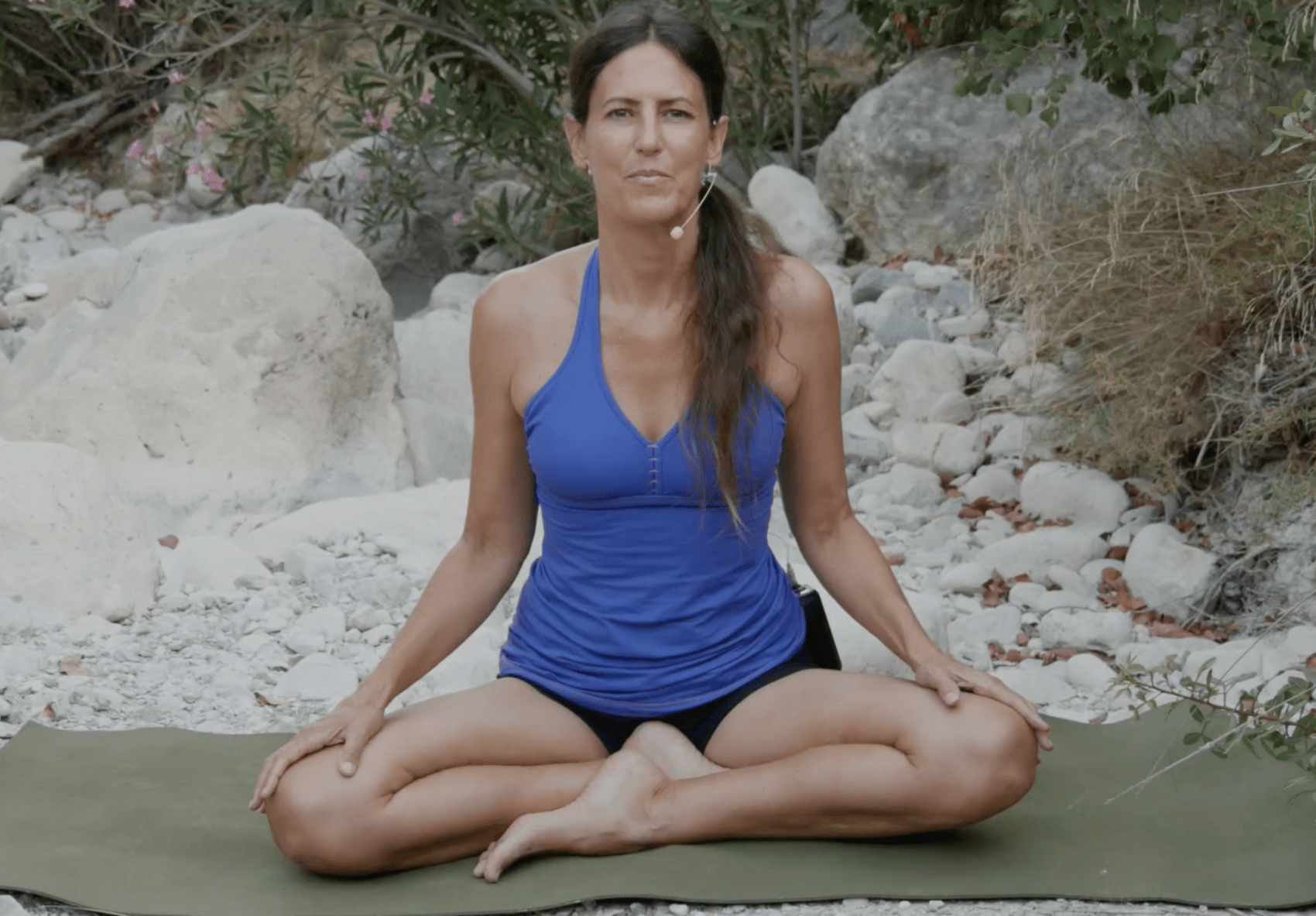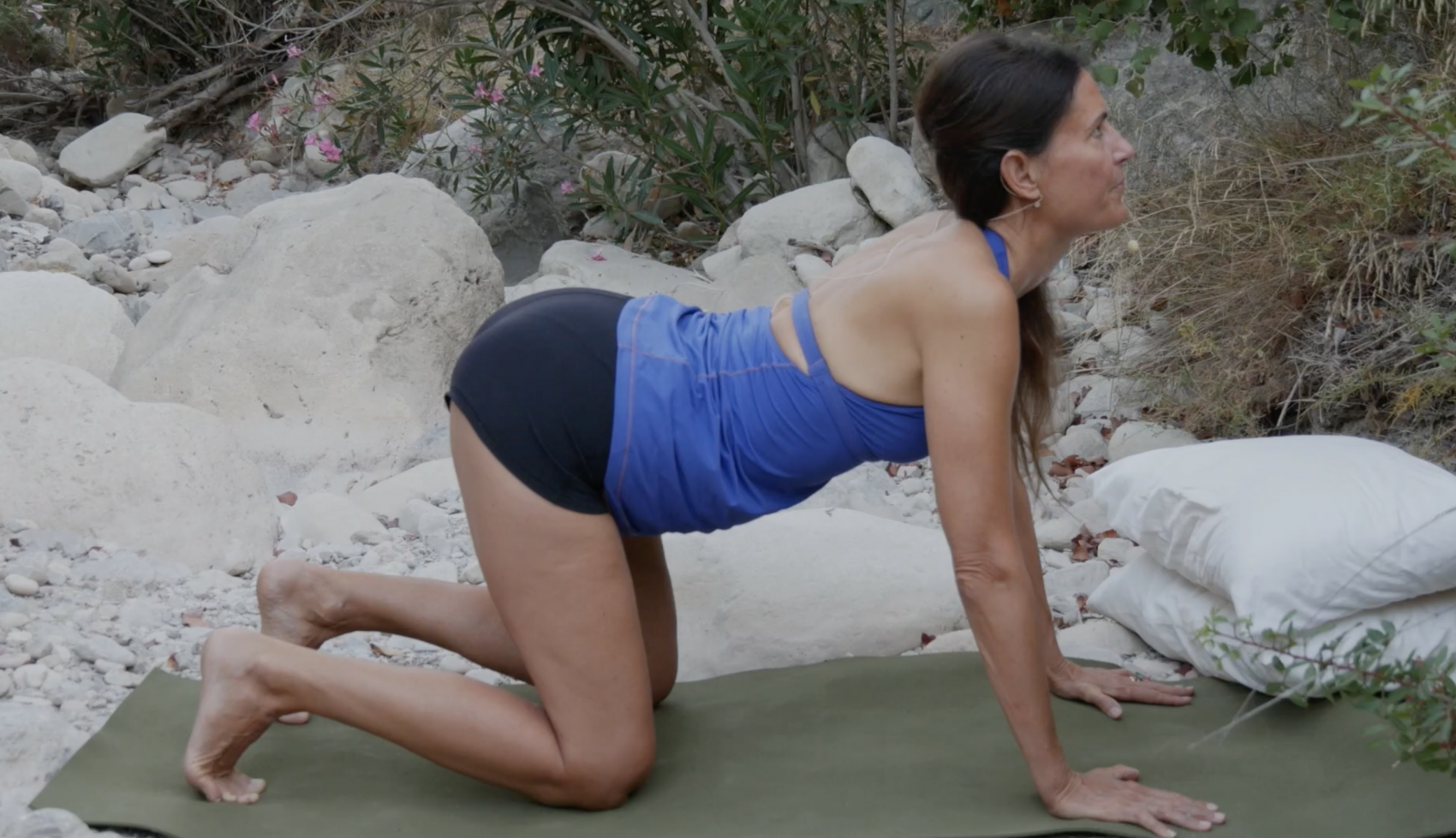In this video, we’ll learn how to perceive the pelvic floor and its subtle movement with the breath. As I mentioned in a previous video, the diaphragm is a dome shaped muscle, which helps us to breathe. The diaphragm and the pelvic floor have a pressure relationship.
When the diaphragm descends, the pelvic floor descends. When the diaphragm elevates, the pelvic floor elevates. If you’re not breathing deeply, the diaphragm is not moving. Much lack of movement or lack of elasticity of the diaphragm can contribute to pelvic floor muscle hypertonicity. This means there is excessive tension and tightness in the pelvic floor muscles.
And these muscles include the levater ani muscles and the muscles of the urogenital diaphragm and the transverse perineals. The pelvic floor is an intricate support system for your internal organs, and like other muscles in our body, it needs to move.

I want you to feel the crest of your hips. This is called the iliac crest. Feel the nobby bones that protrude forward. They’re right here on your BeltLine. Now, feel your sitting bones. It helps to wiggle a little bit, placing your hands under the left and right sitting bone. If you can feel these four points, they’re kind of like a square and that makes up your pelvic.
I’d like you to think of the pelvic floor, that intricate group of muscles I mentioned earlier as a hammock. This hammock goes from your pubic bone to your tailbone, lengthwise, and width wise to each sitting bone. The major muscles that are connected to the pelvic girdle and that support your hammock are your abdominal muscles, your quadriceps and hamstrings, gluteus muscles, and your deep low back muscles and hip flexors like the iliac psoas.
As we engage in our diaphragm breathing, we wanna make sure the support components of the hammock are all slackened or relaxed. To allow your pelvic floor to move through its full range of motion. When you’re feeling anxious, these are the muscles that can tense and tighten. When we’re relaxed, these are the muscles that tend to soft.
When we perform this exercise, we are inhaling and exhaling through the nose. We’ll also use the crown of the head and toes as directional reference points Come into a supported child’s post position. Set your knees wider than hip with distance apart. Take a cushion or two to support yourself. Stack your fists and rest your head on your stacked fists.

Settle, settle your pelvis. Feel your belly soft. As you breathe in the belly gently expands, and as you exhale, begin to relax the thighs. Relax your buttock. Softening the support components of your hammock. Relax your hips.
Bring your awareness to your breath as it enters through your nose. and follow the breath into your lungs. As your lung expands, the diaphragm descends towards your pelvis and your pelvis diaphragm descends towards your toes as you exhale. The diaphragm rises toward the crown of your head. Again, inhale, diaphragm descends toward the toes, and as you exhale that subtle lifting. Of the pelvic floor as the diaphragm rises up, try it for a couple more rounds. Inhaling and exhale, riding the breath all the way out, feeling the subtle.
Now in the next exhalation, we’ll add the squeeze of the pelvic floor. Inhale, expand your breath. Feel the diaphragms, doming down toward the toes. The pelvic floor doming toward the toes. It’s very subtle. And then as you exhale, begin to squeeze the pelvic floor as if trying to move your tailbone will call Romeo towards your pubic bone, Juliet, two star cross levers trying to meet in the middle.
Inhale, relax her pelvic floor. feel the subtle expansion. And then on the exhale, drawing your tailbone towards your pubic bone, your pubic bone towards your tailbone, lifting in the middle, all the breath out.
Inhale again. Relax your pelvic floor. Exhale, squeeze and lift. It’s a gentle squeeze and lift riding the entire breath out. Inhale, relax your pelvic floor and release your concentration. Let’s come up onto all fours for table set your hands beneath your shoulders, your knees, hip width, distance apart, and we’ll continue to ride the breath. Inhale, lift your tailbone and your gaze toward the.
And as you exhale, the pelvic floor domes up, tailbone toward the pubic bone, emptying all your breath. Inhale as you breathe, the diaphragm domes toward the toes, pelvic floor toward the, to. Exhale, tailbone and pubic bone. Romeo and Juliet. Mu meeting in the middle, pelvic floor rising, diaphragm rising. Take a few more rounds. Inhale, slowly coming back to neutral. Come back onto your seat.
Notice that your spine is moving up and down, just like the movement of your pelvic floor and breathing diaphragms. It’s a good way to remember which direction the diaphragms move. In relation to the breaths, the movement and elasticity of your diaphragm are so important. Remember to be patient with yourself.
Practice the breathing techniques and exercises as your breathing diaphragm develops. So will your pelvic. We’ll take this to another level. In our next video, we’ll explore another technique to enhance the feeling of the pelvic floor by creating a vacuum. In the meantime, do the exercises. This can change your life for the better.









